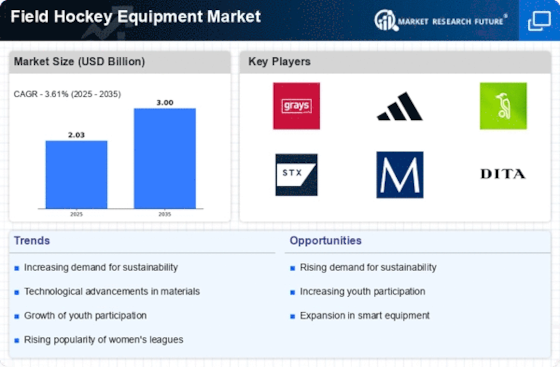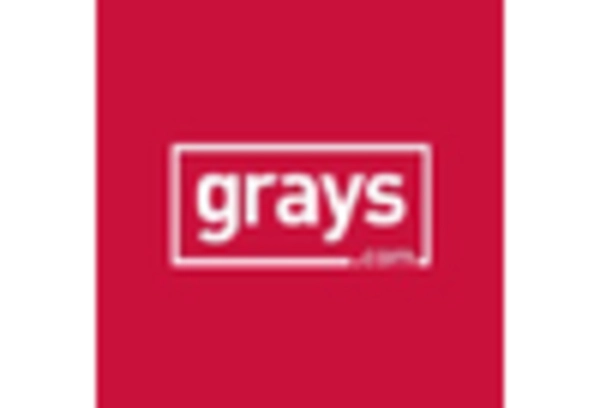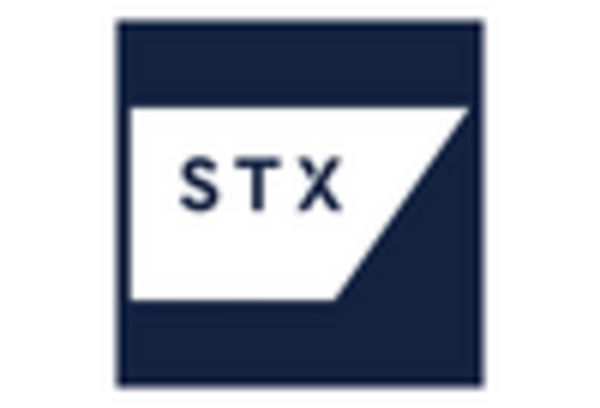Technological Advancements
Technological advancements play a pivotal role in shaping the Field Hockey Equipment Market. Innovations in materials science have led to the creation of lighter, more durable equipment, enhancing player performance. For example, the introduction of composite materials in stick manufacturing has improved strength and flexibility, allowing for better ball control and shot accuracy. Additionally, smart technology integration, such as performance tracking sensors in equipment, is gaining traction among players seeking to enhance their skills. The market is projected to grow as these technologies become more accessible, with an estimated increase in sales of high-tech equipment. This trend indicates a shift towards a more performance-oriented approach in the Field Hockey Equipment Market.
Growing Participation Rates
The Field Hockey Equipment Market is experiencing growth driven by increasing participation rates in the sport. As more individuals, particularly youth, engage in field hockey, the demand for equipment is rising correspondingly. Various initiatives, including school programs and community leagues, are promoting the sport, leading to a broader base of players. According to recent statistics, participation in field hockey has seen a notable increase, with youth leagues expanding in numerous regions. This surge in interest is likely to stimulate sales of essential equipment such as sticks, balls, and protective gear. Consequently, manufacturers are focusing on developing products tailored to new players, which could further enhance the growth trajectory of the Field Hockey Equipment Market.
Sustainability in Manufacturing
The Field Hockey Equipment Market is increasingly influenced by the trend towards sustainability in manufacturing processes. Manufacturers are adopting eco-friendly materials and production techniques to reduce their environmental footprint. This shift not only appeals to environmentally conscious consumers but also aligns with regulatory pressures for sustainable practices. For instance, the use of recycled materials in the production of hockey sticks and protective gear is becoming more prevalent. As a result, companies that prioritize sustainability may gain a competitive edge, potentially increasing their market share. The growing demand for sustainable products is expected to drive innovation within the Field Hockey Equipment Market, leading to the development of new, environmentally friendly equipment that meets consumer expectations.
Rising Popularity of Women's Field Hockey
The rising popularity of women's field hockey is significantly impacting the Field Hockey Equipment Market. As more women participate in the sport, there is a corresponding increase in demand for specialized equipment designed for female athletes. This trend is evident in the growing number of women's leagues and tournaments, which are gaining visibility and support. The increased media coverage and sponsorship opportunities for women's field hockey are likely to attract more players and fans, further driving market growth. Manufacturers are responding by creating equipment that caters specifically to the needs of female players, which may enhance their market presence. This focus on women's field hockey could lead to a more diverse product range within the Field Hockey Equipment Market.
Increased Investment in Sports Infrastructure
Increased investment in sports infrastructure is a key driver for the Field Hockey Equipment Market. Governments and private entities are recognizing the importance of sports in promoting health and community engagement, leading to enhanced facilities for field hockey. The construction of new fields, training centers, and community sports complexes is facilitating greater access to the sport. This investment not only encourages participation but also elevates the standard of play, creating a demand for high-quality equipment. As facilities improve, players are more likely to invest in better gear, which could lead to a rise in sales within the Field Hockey Equipment Market. The long-term implications of this trend suggest a robust growth potential for equipment manufacturers.


















Leave a Comment